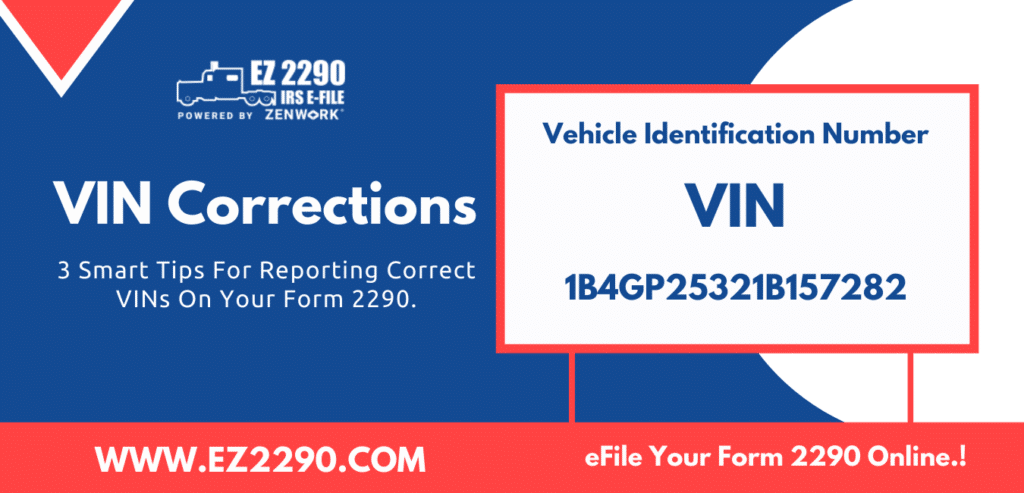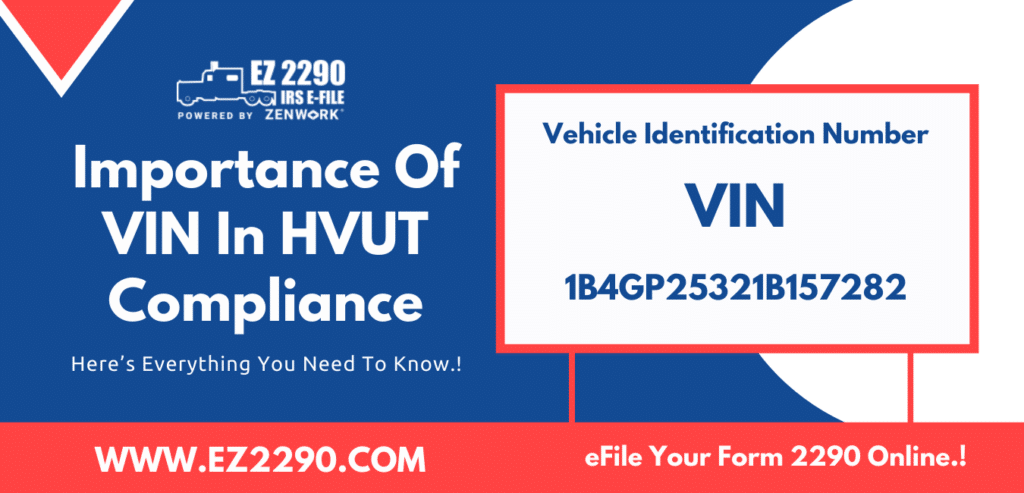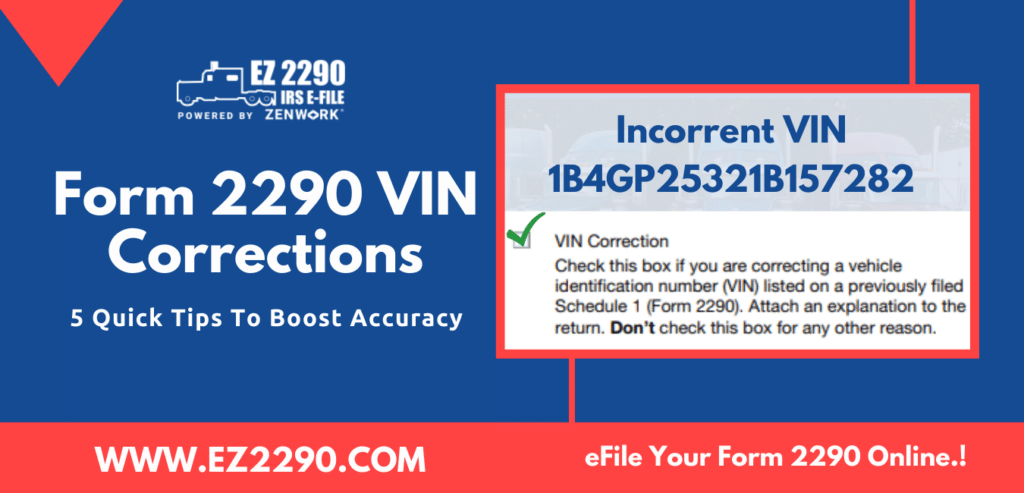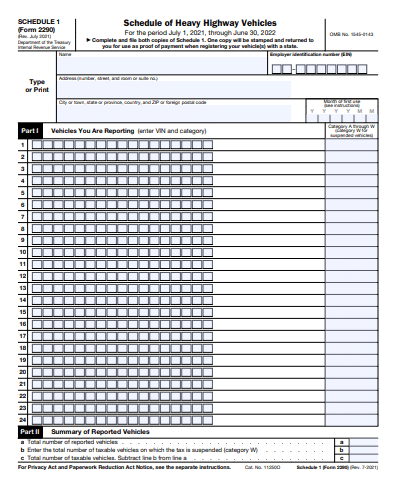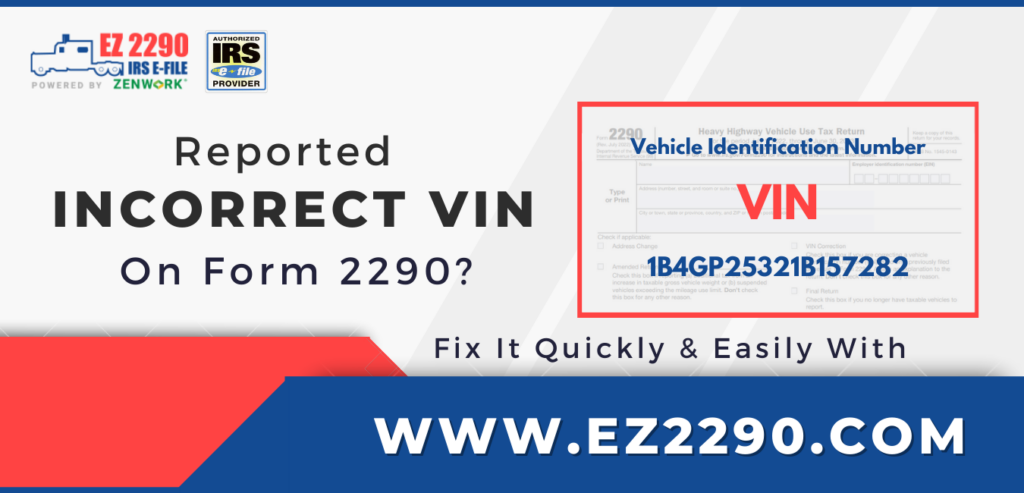
Follow this simple hack to fix an incorrect VIN report on HVUT Form 2290 easily.
Mistakes.
All of us are guilty of doing them.
Some are excused, and some are forgotten.
But if you too are guilty of reporting an incorrect VIN, don’t be.
It’s reasonable.
We’re all too busy focusing on getting the information together. And as a result, it’s plausible to report a vehicle identification number (VIN) incorrectly.
The funny part is that the IRS is probably used to receiving incorrect VINs all the time.
That’s probably why we have the 2290 VIN Correction form, which is specifically meant for correcting VINs.
So, today, let’s take a quick look at fixing an incorrect VIN report easily (without panicking).
Incorrect VIN: How To Fix Your 2290 Reports
Fixing an incorrect VIN begins with fixing your filed 2290 return.
While the “undo” button doesn’t exist in real-life scenarios, we can still “amend” the incorrect reports.
What we essentially mean by this is that in order to fix an incorrect VIN, you’ll need to file a 2290 VIN Correction form.
2290 VIN Correction isn’t exactly a new form, but it must be filed separately.
The form’s purpose is to let the authorities at the IRS know that your previous filings report incorrect VIN(s). It also communicates that the fresh report with the corrected VINs must be considered for regulatory processes.
Before You File 2290 VIN Correction: Verify VINs With Free VIN Check
Double-check your VINs with a free VIN lookup tool.
This is a critical step in correcting or fixing your incorrect VIN reports.
You can use any of the following free tools to check and verify the accuracy of your VINs.
- VIN Free Check: https://www.vinfreecheck.com/
- VIN Check Info: https://vincheck.info/
- VIN Decoder from DrivingTests.Org: https://driving-tests.org/vin-decoder/
Using multiple VIN Check resources will enable you to validate the accuracy of your VINs better.
Quick Tip: If you’re planning on buying a new truck, VIN checks from various sources will help you verify the vehicle details more accurately.
VIN Correction: Analyzing Error Probability
Pay attention to the characters of the VIN.
VIN is a combination of letters and numbers.
Sometimes, the VIN that you have on record and the VIN that you might be searching for, could be accurate.
However, errors happen when you enter incorrect characters.
So, human errors cannot be ruled out.
This is more prominent for filers who enter the data manually.
Incorrect VIN reports are common if you’re manually entering the VINs in the forms, or if you’ve outsourced the form completion work to someone.
Either you or the outsourcing team could have reported the characters incorrectly.
It could be an honest mistake and can be easily fixed with a quick VIN verification.
On the other hand, if you’re handwriting your 2290 forms, look out for characters that can be easily mistaken for the other.
Alphabets:
- ‘Q’ for ‘O’
- ‘X’ for ‘N’ or ‘Y’
- ‘P’ for ‘B’
- ‘L’ for ‘I’
Numerics:
- 3 for 8
- 5 for 6
- 8 for 6
eFiling 2290 VIN Correction: A Smart Approach To Address Incorrect VINs
Given the number of inconsistencies that handwritten 2290 forms can create, it’s best to opt for electronic filing.
With electronic forms, the ink is consistent throughout and the font is sharp and concise, which is perfect for comprehension.
With EZ2290, you can not only eFile 2290 VIN Correction forms, but you can do it for FREE!
If you’ve previously filed with EZ2290, your VIN Corrections would be at no additional cost.
But that’s not all.
Consider the benefits of filing form 2290 with Ez2290:
- eFile 2290 forms in 3 quick steps
- Import your 2290 vehicle data with Excel and save it on cloud storage. (No need to switch platforms.)
- Free 2290 VIN Corrections
- Free re-file for rejected returns
- Secure e-transmission
- Live tax support
- File hundreds of 2290 forms at once
- Automated tax calculations (so you stay focused on reporting)
- Real-time TIN Matching
- Manage your HVUT filings from any device
Alternatively, you can opt for EZ2290’s Managed Services.
Our team will manage your 2290 filings from start to finish
Explore Managed Services | Sign Up Now & eFile Form 2290 Online
Fixing your VINs on 2290 forms can be a breeze with a dynamic eFiling platform like EZ2290.
eFile and manage your HVUT filings easily today.
Related Form 2290 Articles:
How To Pre-File Form 2290 In 5 Super Quick Steps?
Quick HVUT Compliance Guide For Trucking Businesses & Preparers
